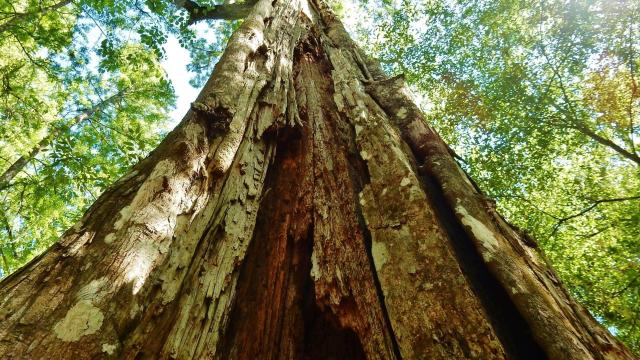The morning after a severe weather event — whether a localised thunderstorm or major cyclone — people cautiously walk out of their homes to survey the damage. If you live somewhere with trees, chances are you’ll find at least a few that are no longer standing, either on your property or near it.
Although powerful storms can snap a live tree in half, many of the trees that topple during thunderstorms or strong gusts of wind are actually rotting — making them even more susceptible to falling. And while some trees are visibly decaying, others (like many of us) are crumbling within. Here’s how to spot a rotting tree, so you’ll be able to deal with it on your own time, instead of after the next storm.
What happens when a tree rots?
Typically, before a tree begins to rot, it is injured in some way — either in a storm, by an animal, in an accident, etc. — leaving exposed, damaged wood. Then, a variety of different organisms move in, including fungi, which starts breaking down the wood inside the tree, causing it to weaken, according to Tonya Barnett at Gardening Know How. The fungi will then make its way to the other parts of tree, leaving a trail of decay behind it.
What are the signs of a rotting tree?
The first thing to know is that some trees tend to rot more easily than others; specifically, softwood tree species like oak, tells WWLP.
So what should you look for? Here are some of the signs of tree rot, courtesy of Sherman, as well as Mr. Tree Service of Portland, Oregon:
- Mushroom-like growth on the outside of the trunk — especially around the base of the trees, or on any branches or stems
- Missing bark or deep marks
- A crack in the trunk that looks like “V” rather than “U” shape
- Being able to see inside the trunk at a site of injury
- Wilting leaves
- Tree growth slowing down or stunted
- Dead branches on the ground around the tree
- Fine sawdust near the base of the tree
- Cracked footpaths caused by uprooting
Can a rotting tree be saved?
Unfortunately, not really. Once a tree has started rotting, your best is removing the visibly damaged branches. If most of the tree is already decayed, removing it is usually the only option — especially if you live in an area prone to storms or strong winds (which seems like basically everywhere, at this point) to avoid the potential damage from the rotting trees falling on their own.
Plus, when you prune the infected parts of the tree, it “will reduce the risk of the airborne fungi beginning to colonise on other nearby trees,” Barnett writes.

Leave a Reply
You must be logged in to post a comment.